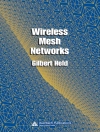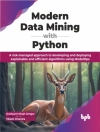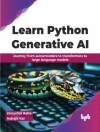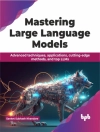UNMANNED AERIAL VEHICLES FOR INTERNET OF THINGS
This comprehensive book deeply discusses the theoretical and technical issues of unmanned aerial vehicles for deployment by industries and civil authorities in Internet of Things (Io T) systems.
Unmanned aerial vehicles (UAVs) has become one of the rapidly growing areas of technology, with widespread applications covering various domains. UAVs play a very important role in delivering Internet of Things (Io T) services in small and low-power devices such as sensors, cameras, GPS receivers, etc. These devices are energy-constrained and are unable to communicate over long distances. The UAVs work dynamically for Io T applications in which they collect data and transmit it to other devices that are out of communication range. Furthermore, the benefits of the UAV include deployment at remote locations, the ability to carry flexible payloads, reprogrammability during tasks, and the ability to sense for anything from anywhere. Using Io T technologies, a UAV may be observed as a terminal device connected with the ubiquitous network, where many other UAVs are communicating, navigating, controlling, and surveilling in real time and beyond line-of-sight.
The aim of the 15 chapters in this book help to realize the full potential of UAVs for the Io T by addressing its numerous concepts, issues and challenges, and develops conceptual and technological solutions for handling them. Applications include such fields as disaster management, structural inspection, goods delivery, transportation, localization, mapping, pollution and radiation monitoring, search and rescue, farming, etc. In addition, the book covers:
* Efficient energy management systems in UAV-based Io T networks
* Io E enabled UAVs
* Mind-controlled UAV using Brain-Computer Interface (BCI)
* The importance of AI in realizing autonomous and intelligent flying Io T
* Blockchain-based solutions for various security issues in UAV-enabled Io T
* The challenges and threats of UAVs such as hijacking, privacy, cyber-security, and physical safety.
Audience: Researchers in computer science, Internet of Things (Io T), electronics engineering, as well as industries that use and deploy drones and other unmanned aerial vehicles.
Über den Autor
Vandana Mohindru Ph D is an assistant professor in the Department of Computer Science and Engineering, Chandigarh Group of Colleges, Mohali, Punjab, India. Her research interests are in the areas of Internet of Things, wireless sensor networks, security, blockchain and cryptography, unmanned aerial vehicles. She has published more than 20 technical research papers in leading journals and conferences.
Yashwant Singh Ph D is an associate professor & Head in the Department of Computer Science & Information Technology at the Central University of Jammu. His research interests lie in the area of Internet of Things, wireless sensor networks, unmanned aerial vehicles, cybersecurity. He has published more than 70 research articles in the international journals and conferences.
Ravindara Bhatt Ph D is an assistant professor at Jaypee University of Information Technology, Solan, H.P., India. He has over 20 years of experience in academics and industry in India. He has published more than 30 research papers in leading journals and conferences. His areas of research include sensor networks, deployment modeling, communication, and energy-efficient algorithms, security and unmanned aerial vehicles.
Anuj Kumar Gupta Ph D is professor & Head in CSE at Chandigarh Group of Colleges, Mohali, Punjab, India. He has published 100+ research papers in reputed journals.












